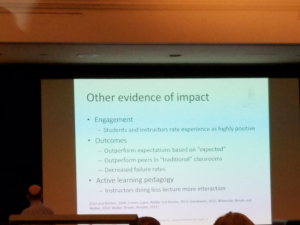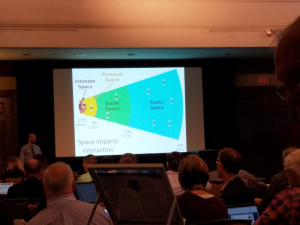Higher Ed is Under Siege…
on Thursday, 15 December 2016.
Have you been to a conference with an opening keynote that just didn’t seem relevant to the attendees, their jobs or the trends and topics that they wanted to learn about? Probably. That’s why I like to share when I attend a conference at which the keynote speaker is spot on- knowing his audience, tailoring his content and providing takeaways that make sense and are usable.
At the DET/CHE (directors of educational technology/ California higher ed) conference this year, Adam Finkelstein from McGill University took the stage on the first full day of sessions. He had a difficult task; he had to engage and education a room of about 170 attendees with clearly varied jobs. DET/CHE pulls in AV and IT department heads, instructional designers, directors of distance education programs, and even some tech-inspired faculty. They all want to learn about learning technologies, but will understand use the new concepts in diverse ways that fit their position. No matter what their focus was, he grabbed the attendees immediately by proposing that “Higher Ed is under siege. It is neither affordable nor is it a great value.” Yipes! That’s a pretty strong statement, considering just about everyone in the room makes...

He said that first we have to understand what isn’t true in order to design spaces that provide value, engagement and better outcomes. What is NOT true, according to Finkelstein:
- We only use 10% of our brains
- There are right brain and left brain people
- We remember 10% of what we read, 20% of what we hear, 30% of what we see, etc.
- We should match learning styles to teaching methods (oh, and there aren’t any “learning styles”)
- We are born multi-taskers
- There is an average student
Now Finkelstein transitions to what is true; active learning environments result in decreased failure rates, increased engagement and outperformance of peers in traditional classroom spaces. He doesn’t just say it, he supports it with his own, and others’ research. So if we believe what he says to be true, how do we create environments and develop pedagogy and interact with students to promote active learning? He says that we have to remember, “The one who does the work, does the learning.” Meaning, as students teach and interact with each other they are also learning and retaining the information. Concepts have greater meaning and more depth. Learning has more value.
Our jobs are...
